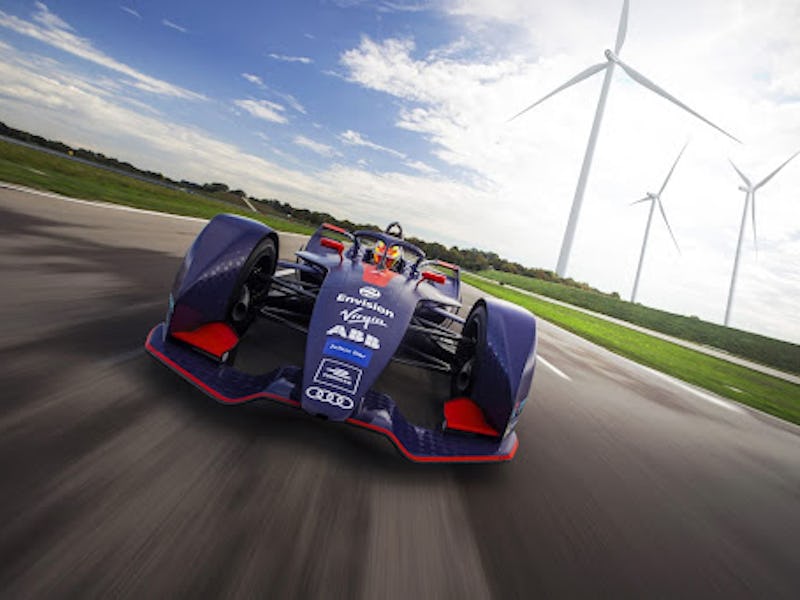How Formula E will help EVs reach a "tipping point"
Formula E is charging the way to more efficient electric cars, and it could help automakers reach a "tipping point".

For the past century, from tires to the rear-view mirror, fabricating sports and race cars have indirectly created technology that everyone can benefit from. Race teams for Formula E, a championship for electric vehicles exclusively, know this well, which is why some of them are working on making electric vehicles the most attractive option for our climate crisis.
The Formula E Twitter posts a promotional image ahead of this week’s Berlin E-Prix.
Innovation is the core of Formula E
In March 2011, founder Alejandro Agag and FIA President Jean Todt first envisioned Formula E through a series of notes on a napkin in a Paris restaurant. The first race was only seven years ago, in Beijing’s Olympic Park.
But Sylvain Filippi, managing director of the Envision Virgin Racing Formula E Team, tells Inverse that it’s already improved everyday electric cars.
Filippi gives the example of electric car voltage. Voltage is calculated by dividing the power (measured in watts) by the current (measured in amps). That means that for an electric car, a higher voltage means more power moving through its engine.
When the first season started in 2014, standard electric vehicles would offer between 300 and 400 volts. But even on that first season, Formula E was operating at 900 volts.
“Super high voltage only has benefits,” Filippi says. “There are no downsides.”
It means:
- Less heat from more efficient operation
- Half the amps for the same power, which reduces losses
- Enables superfast charging
- That, in turn, enables longer journeys
Want to know more about Formula E, how its technology could make all EVs more efficient, and what the EV industry might look like in 2025? Read the full interview with Sylvain Filippi, only in MUSK READS+.
Going beyond the race track
Because most cars used 400 volts at the time, Formula E had to build up manufacturing for all these high-voltage components.
“We created the whole supply chain five or six years ago,” Filippi says.
That trickles down to the average user:
- The Porsche Taycan claims to be the first 800-volt production vehicle. The $185,000 Turbo S offers 0 to 60 mph acceleration times of 2.6 seconds.
- Hyundai’s upcoming Ioniq 5 sports an 800-volt architecture that can add 70 miles of range in just five minutes.
- Delphi Technologies, an inverter supplier, claimed in September 2020 that by 2024 it would supply three of the top four global premium automakers with 800-volt products.
But although Formula E has already pushed electric cars forward, there’s still plenty more to go.
“We are still at the stage of technology where even though the electric tech’s pretty much at the very high end, the gains are still very much there,” Filippi says. “That’s super exciting.”
TO READ THE FULL INTERVIEW, SUBSCRIBE TO MUSK READS+.
Here is what you will gain from subscribing to MUSK READS+:
- Three emails per week, enabling fans to go deeper into the week’s news.
- Original interviews and reporting, longform analysis, previews, and recaps of major events, including earnings calls and more.
- Community-focused extras like responses to reader mail, an upcoming event calendar, and notable anniversaries.
- An archive of previous subscriber-only content, so you can easily read back over what you might have missed.
- Promotional deals and offers.
- Supporting original, independent journalism.
MUSK READS+ is a fully independent operation. We are not Elon Musk, nor are we employed by him. Our job is to report the events we find newsworthy, giving you the inside look at the worlds of space rockets, electric cars, clean energy, and more. It means first-hand accounts of a SpaceX rocket launch, Tesla insights from third-party analysts, and more.
If you want to support us in our mission, and receive original interviews and analysis, consider contributing with a subscription.